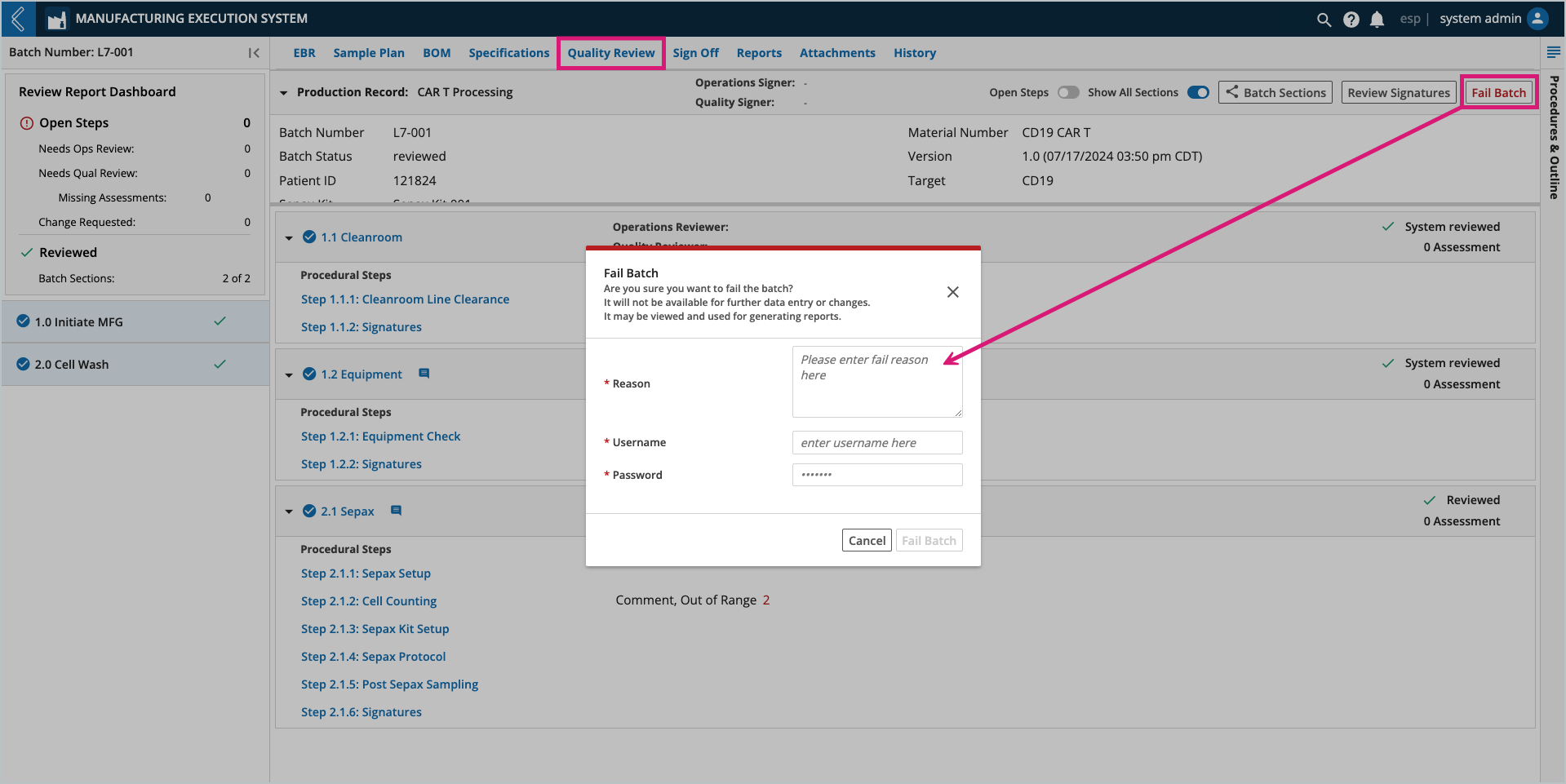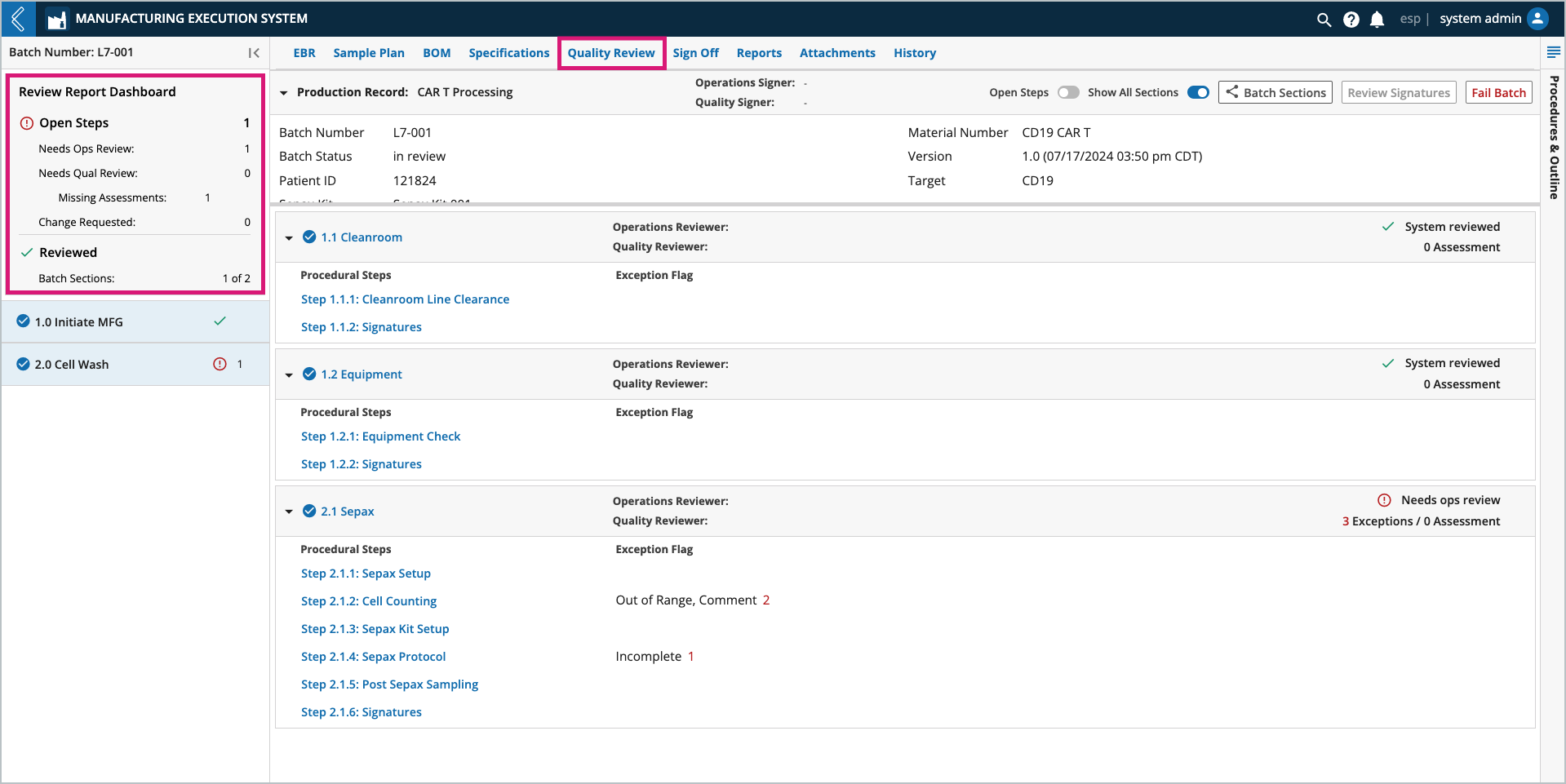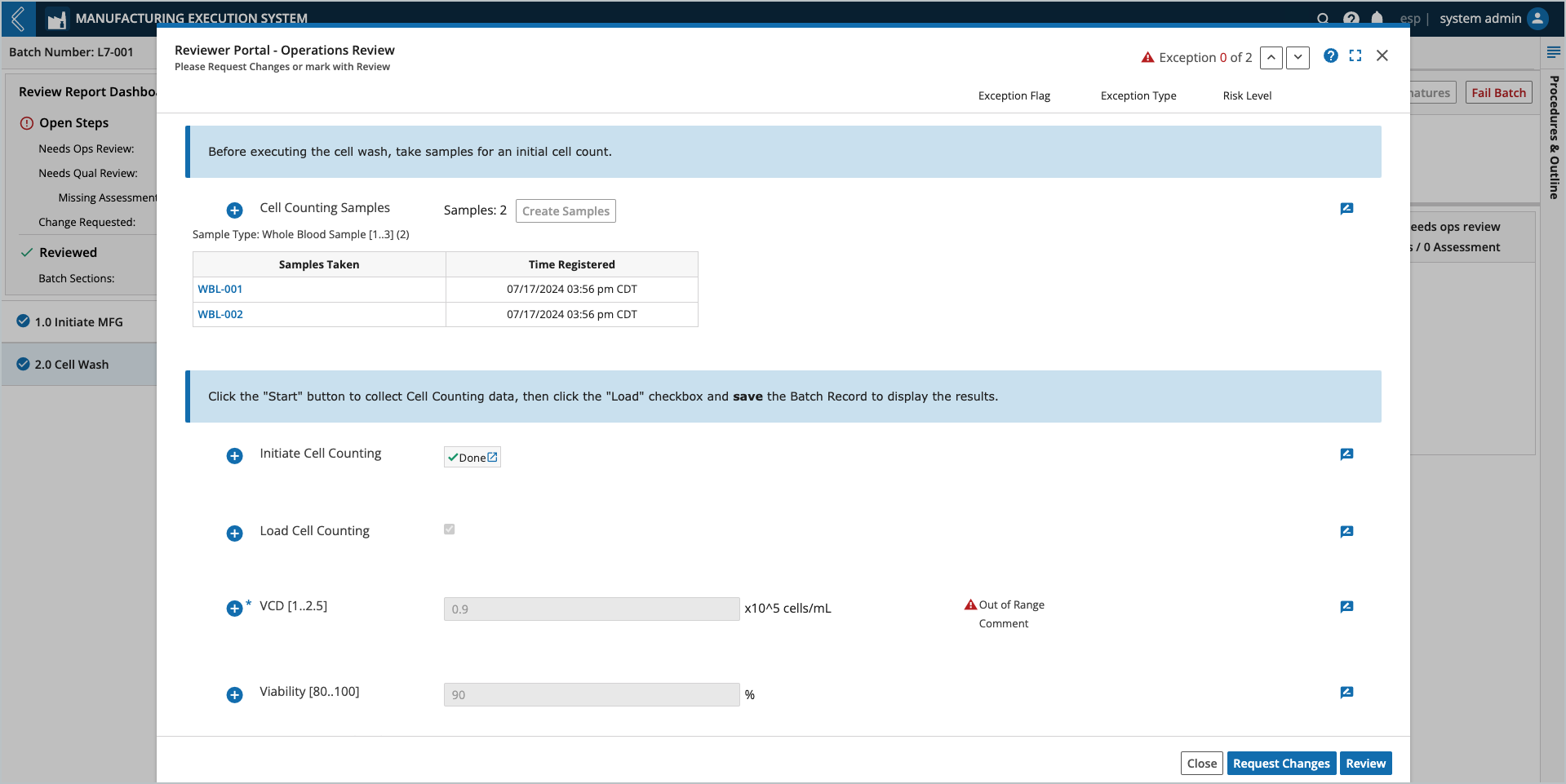Operations and Quality Reviewers
Goals
Understand what Quality Review is in L7 MES.
Know how to use the Reviewer Portal to review Steps, triage exceptions, request changes, and add comments.
Know how to use the Editor Portal to make changes to Step data.
Know how to enter review signatures.
Know how to fail Batches.
Term | Definition |
Quality Review | The Quality Review tab is used to review and correct data in the Batch Record. |
L7 MES Tab | Activity | Permission(s) |
|---|---|---|
Quality Review | Mark a Step as Reviewed when in “Needs Ops Review” status | MES → Operations Review LIMS → Sample Sheet → Update |
Quality Review | Mark a Step as Reviewed when in “Needs Qual Review” status | MES → Quality Review LIMS → Sample Sheet → Update |
Quality Review | Request changes to a Step | MES → Operations Review or MES → Quality Review and LIMS → Sample Sheet → Update |
Quality Review | Make changes to a Step in “Changes Requested” status | MES → Data Entry LIMS → Sample Sheet - Update LIMS → Sample Sheet - Force Update |
Quality Review | Enter an Exception Assessment and push to QMS | MES → Quality Review LIMS → Sample Sheet → Update Analysis → Pipeline → Execute |
Quality Review | Fail a Batch | MES → Quality Review LIMS → Workflow Chain Instance → Update |
Quality Review | Review Signatures, Operations Signer | MES → Operations Review LIMS → Sample Sheet → Update LIMS → Workflow Chain Instance → Update |
Quality Review | Review Signatures, Quality Signer | MES → Quality Review LIMS → Sample Sheet → Update LIMS → Workflow Chain Instance → Update |
Operations and quality reviewers are responsible for reviewing exceptions in the Batch Record. They can triage these exceptions, request changes, and add comments in the Quality Review tab of the Batch Record.
 |
When a Step is completed in EBR, L7 MES automatically reviews the data to identify any exceptions that require review. Exceptions include:
Comment – any field with a comment.
Comment - deviation – any field with a deviation type comment.
Required set to N/A – any required field that was marked N/A.
Incomplete – any field that was left blank and not marked as N/A.
Unsigned – any Signature Flow that does not contain all required signatures.
Out of Range – any numeric or sample point field that is below the minimum or above the maximum defined for the field.
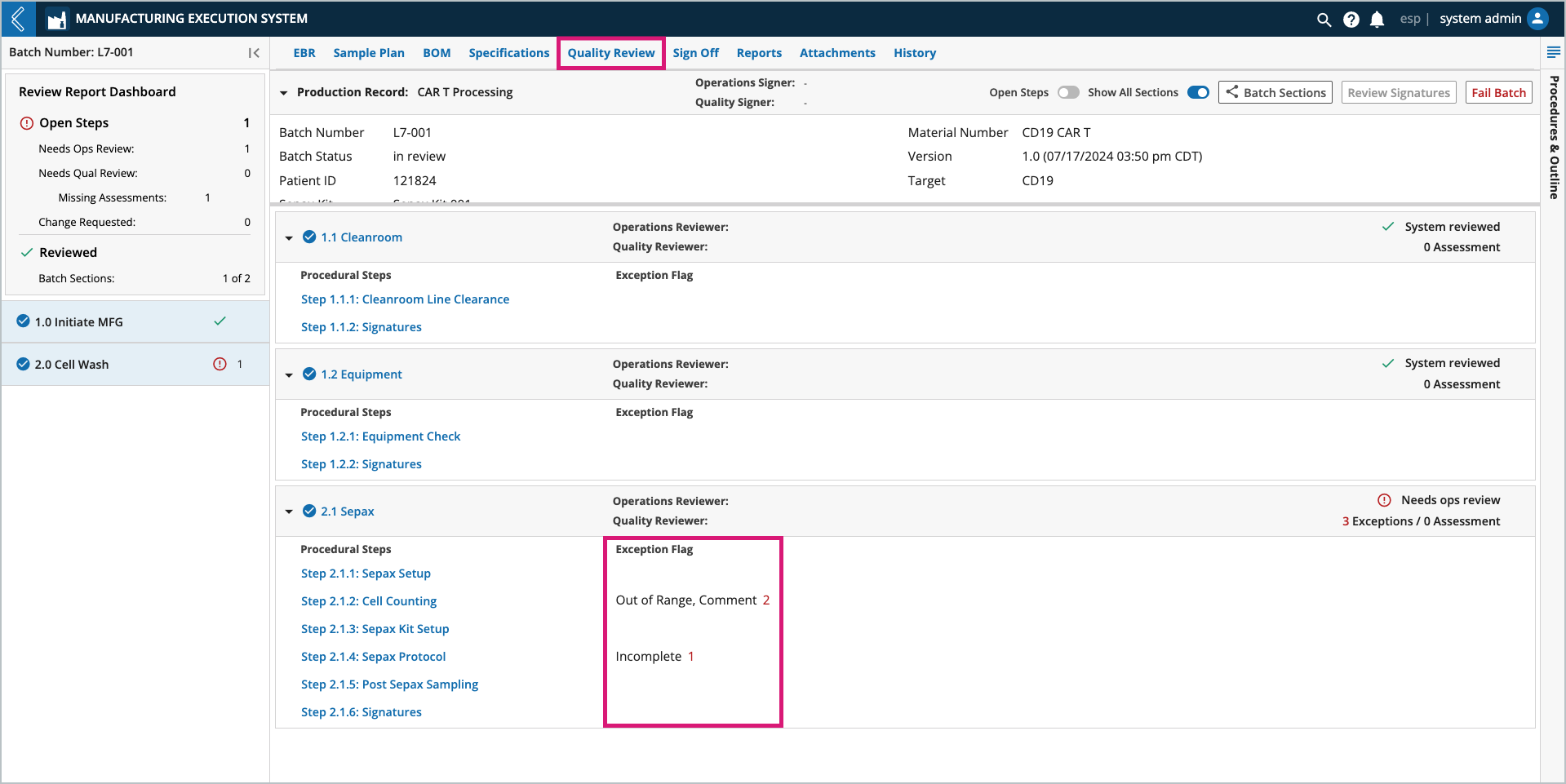
Steps that have exceptions require review by first an operations reviewer, and then a quality reviewer.
If either reviewer decides that changes need to be made, they can request changes to Step data by an authorized user.
After the changes are made, the Step must be reviewed again.
Note
Changes can also be requested for Steps without exceptions.
Each Step in the Batch is assigned a status, based on its exceptions and review state:
Needs Ops Review – the system review identified changes or exceptions that need to be reviewed by an operations reviewer.
Needs Qual Review – operations reviewed the Step and it now needs to be reviewed by a quality reviewer.
Changes Requested – either the operations or quality reviewer requested changes Step data.
Reviewed – the Step has been reviewed by both an operations and the quality reviewer. No further action is required, but changes can still be requested.
System Reviewed – the system review identified no exceptions. No further action is required, but changes can still be requested.
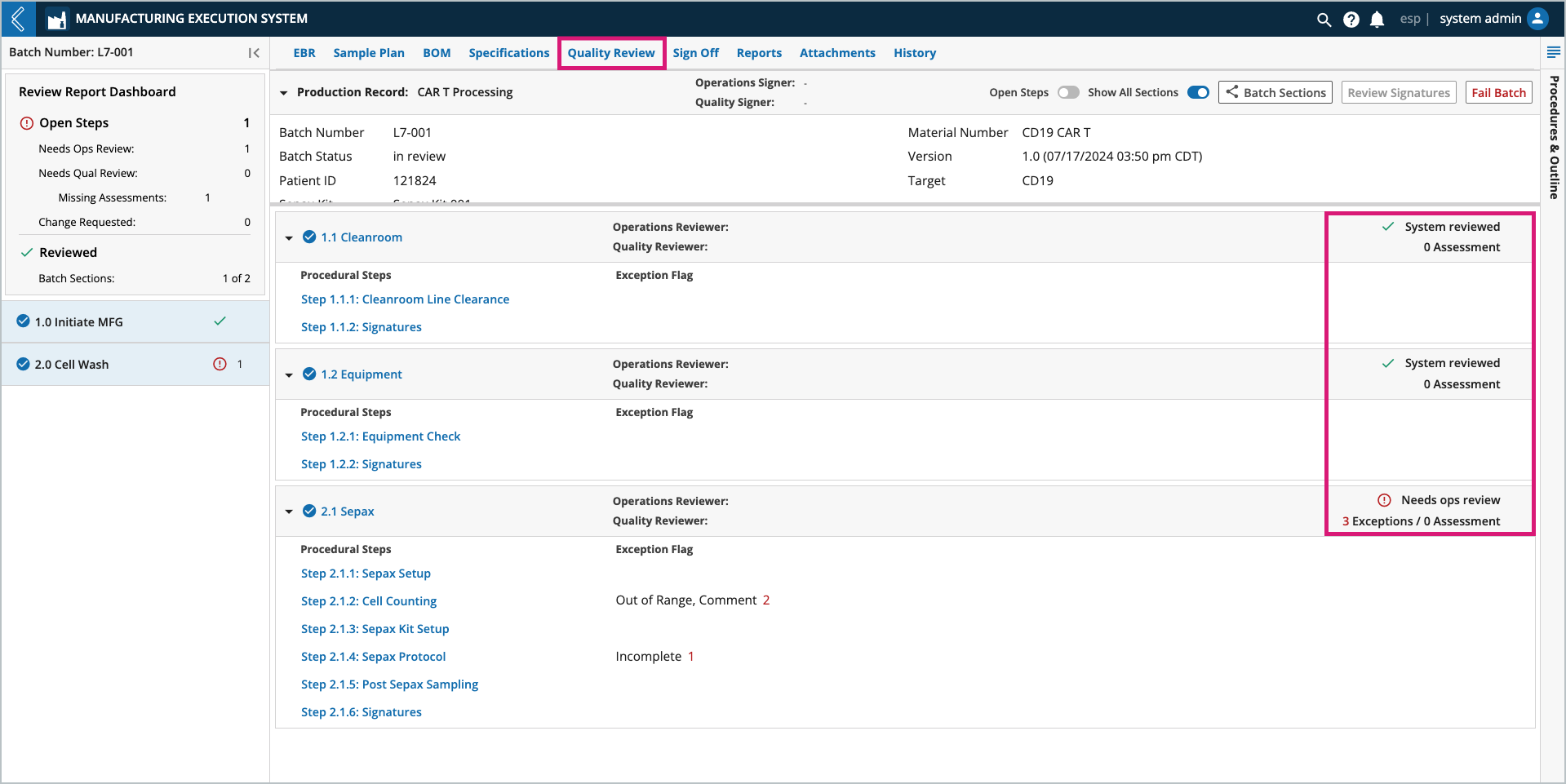
To complete the review process, Quality Review requires one (1) signature from an operations reviewer and a second signature from a quality reviewer.
Selecting a Step or Sub-Step in Quality Review opens the Reviewer Portal, which displays the Step as it appears in EBR. The Reviewer Portal is used to mark the Step as reviewed, request changes to Step data, and add comments to the Step.
Use the up and down arrows at the top of the modal to navigate through the exceptions in the Step.
To mark the Step as reviewed:
Select Review.
Enter a Review Comment (appears on the Final Batch Report).
Select Review.
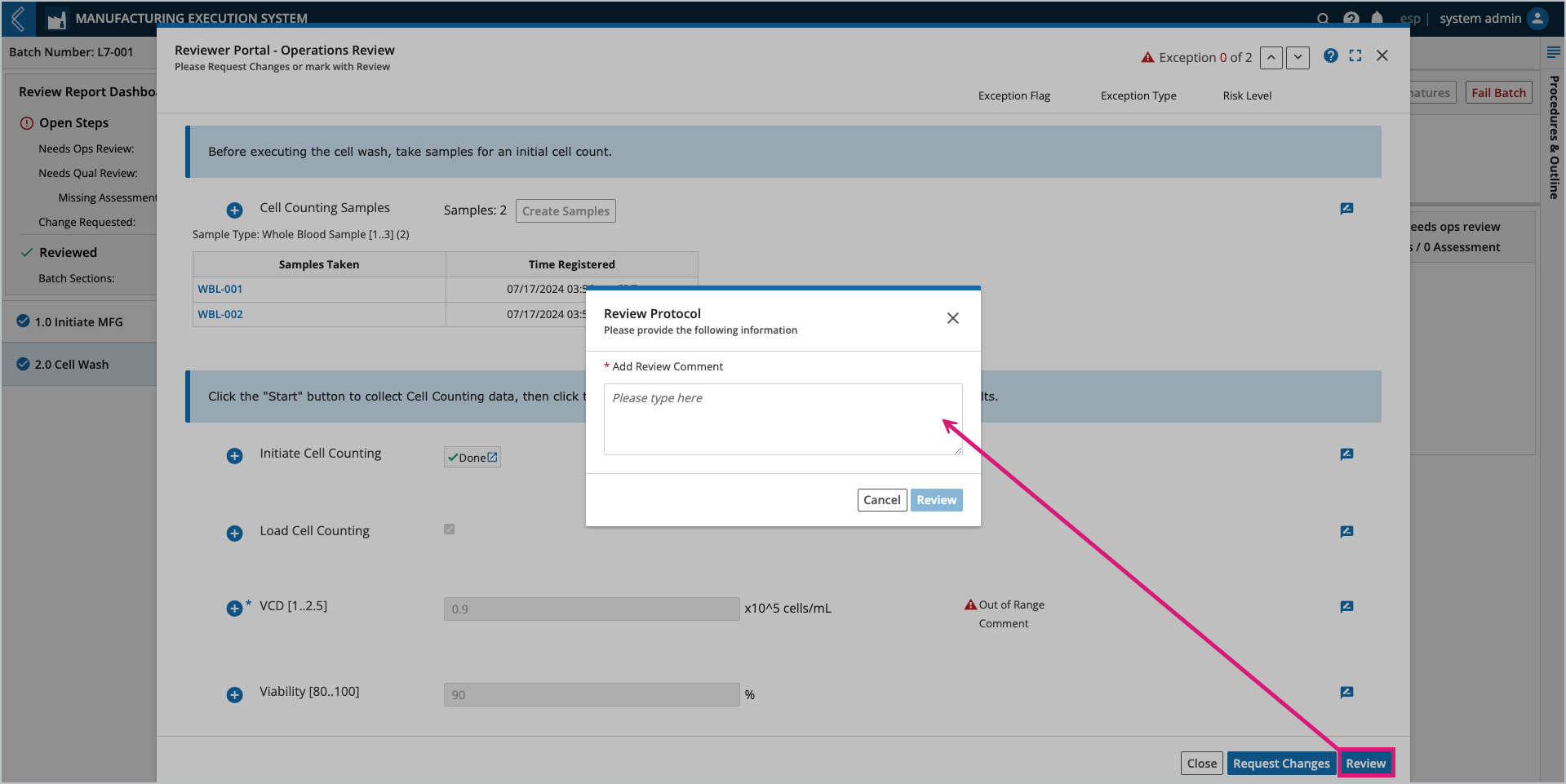
To request changes to Step data:
Select Request Changes.
Nominate one (1) or more users to make the changes in the Editor Portal by selecting the Type of nomination:
User – specify a single user with the appropriate permissions.
Role – specify a Role with the appropriate permissions. Any member of that Role can update data in the Step.
Workgroup – specify a Workgroup. At least one (1) of the members of the Workgroup must have the appropriate permissions.
Select Request Changes.
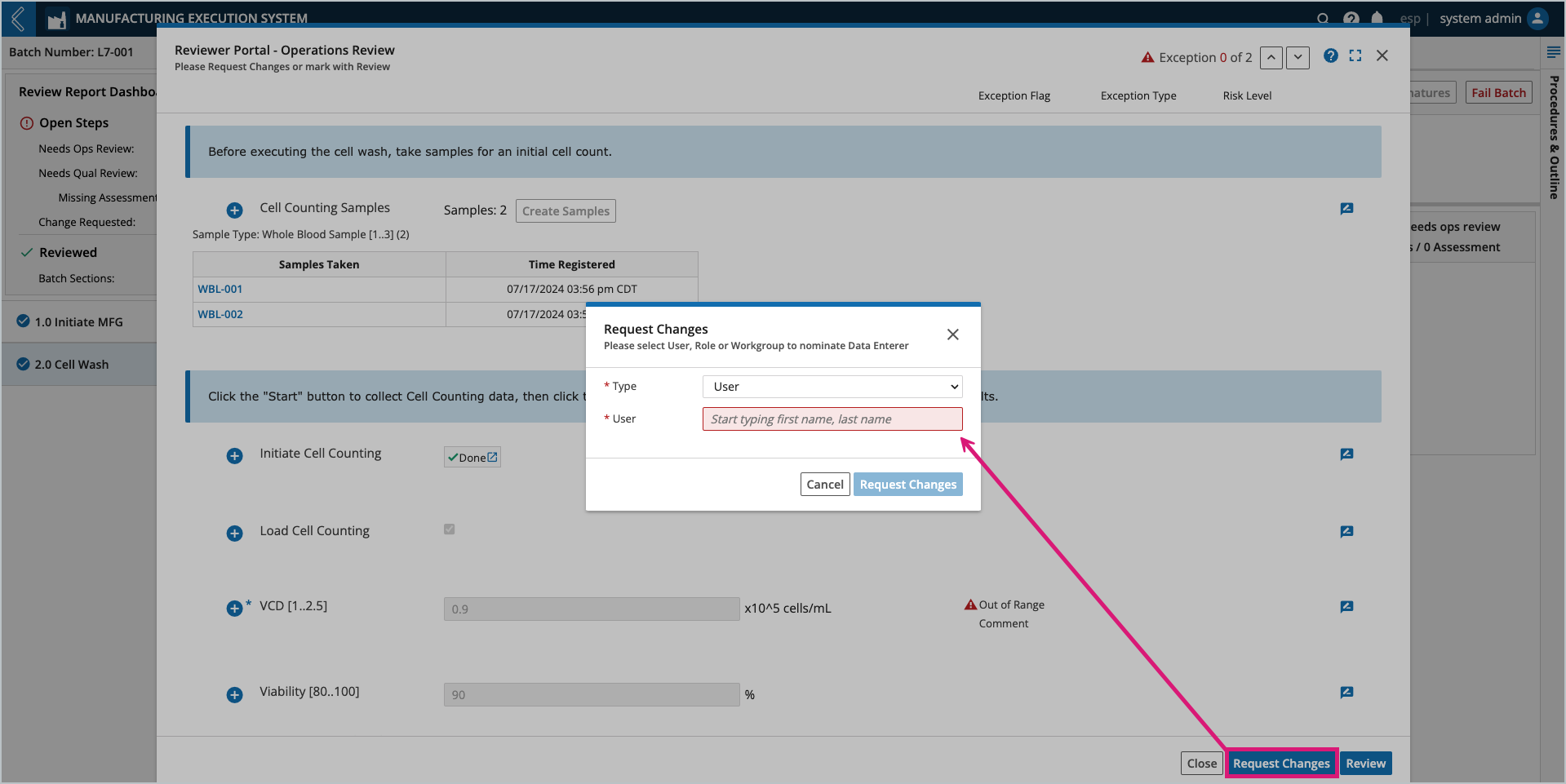
Comments may be added to a Step in the Reviewer and Editor Portal. The user who added the comment and the date time it was recorded appear with the comment at the bottom of the Step.
To add a comment to the Step:
Select + Add Step Comment at the bottom left of the portal.
Select the comment Type:
Comment – standard comment that will be included in the Final Batch Report.
Deviation – highlighted comment that will be included in the Final Batch Report.
Sticky Note – temporary comment that is only displayed in the Reviewer or Editor Portal.
Add the comment.
Note
Sticky Notes do not appear in the Final Batch Report, and they are not displayed after the Batch has completed Quality Review.
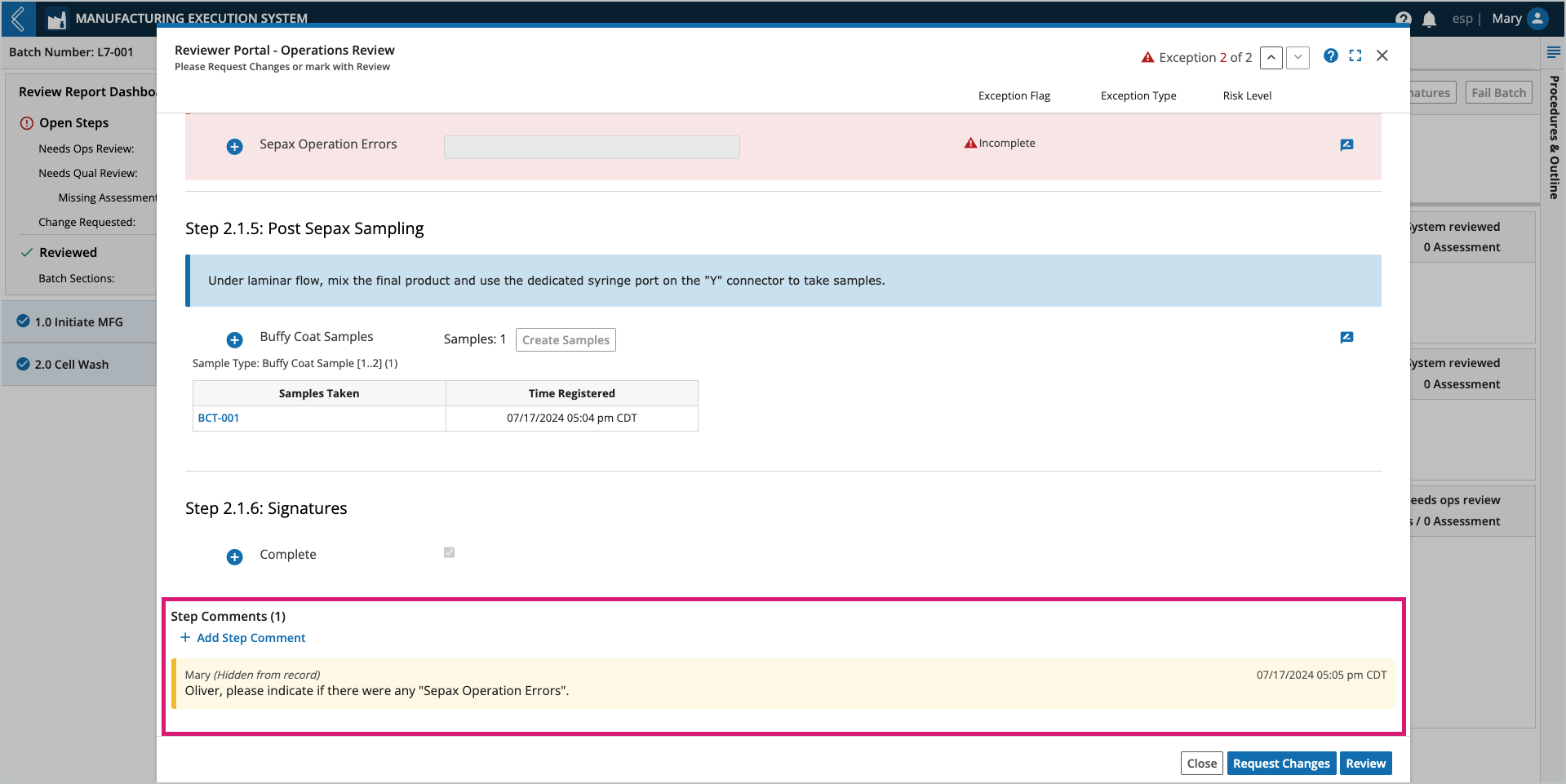
After a comment has been added, you will see a comment icon appear next to the name of the Step in the main panel.
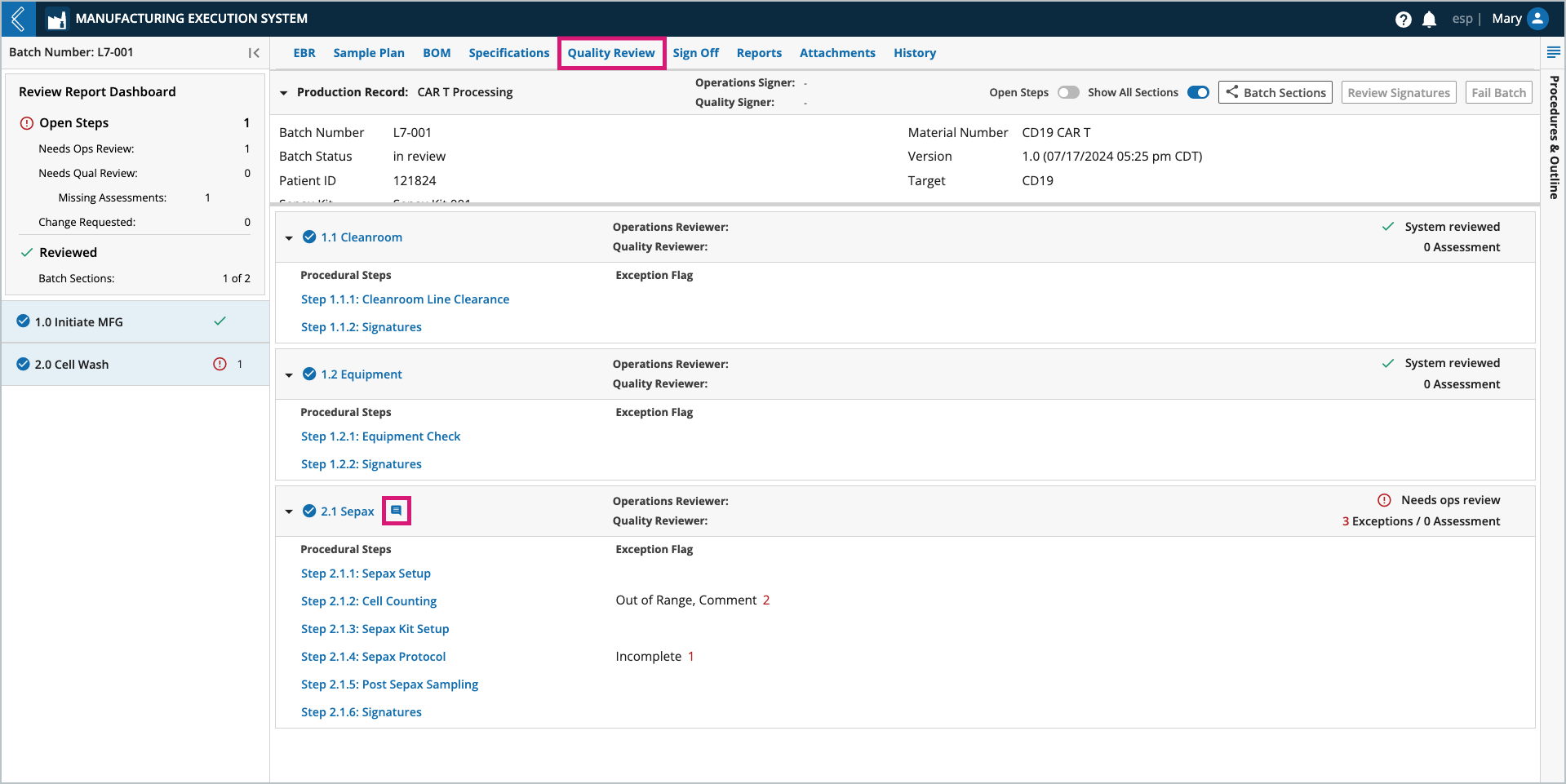
The Editor Portal allows nominated users to make changes to Step data. Nominated users will receive an L7|ESP notification indicating which Step of the Batch requires changes, and who nominated them during the Quality Review Process.
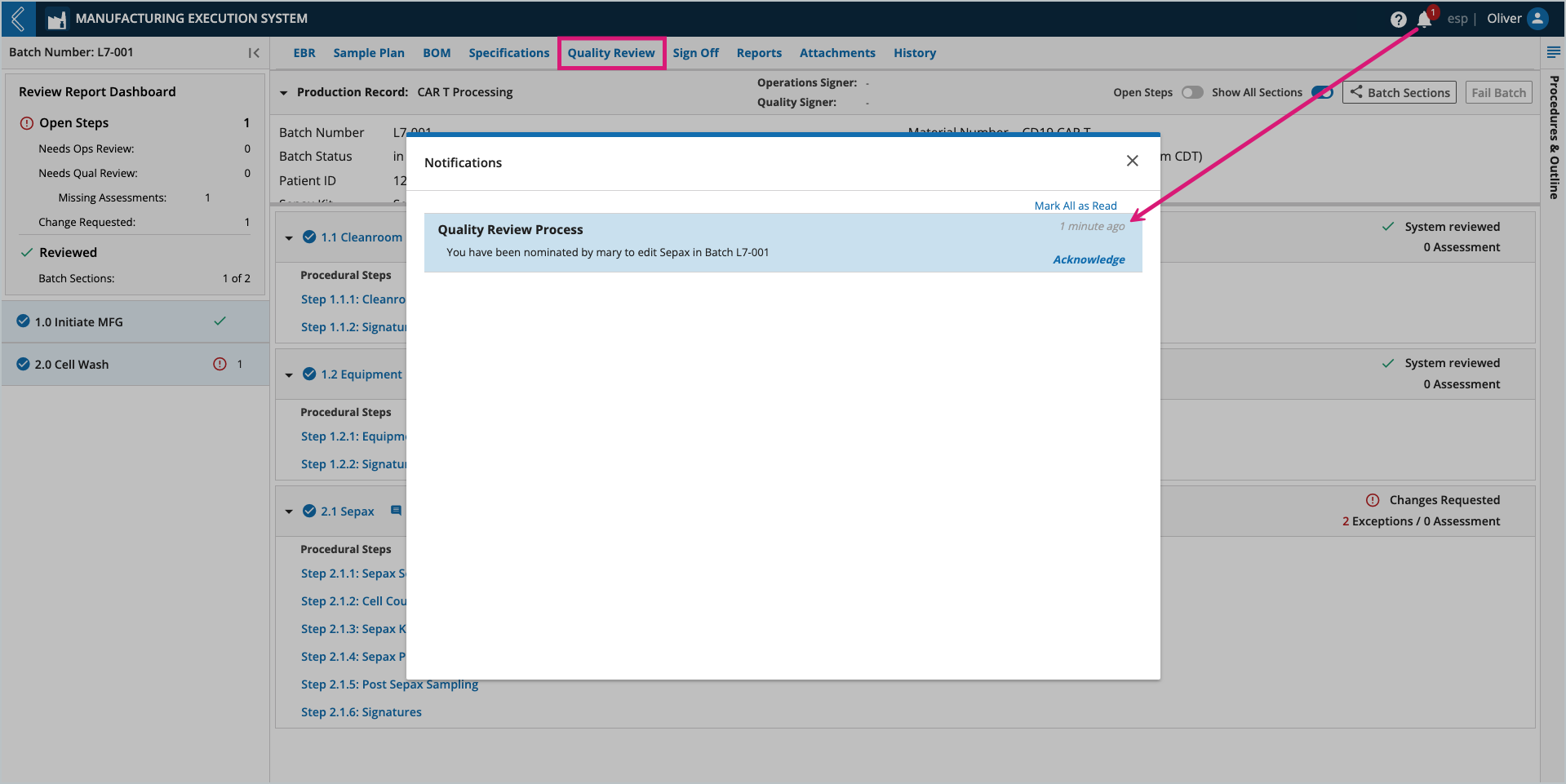
To make changes to data in the Editor Portal:
Select the name of the Step or Sub-Step.
Use the up and down arrows at the top of the modal to navigate through the exceptions in the Step.
Note
Remember that changes can be requested for Steps without exceptions.
Update the data as you would in EBR.
Select Save.
Enter your L7|ESP username and password (must be the logged-in user).
Enter a Change Reason (appears on the Final Batch Report).
Select Save.
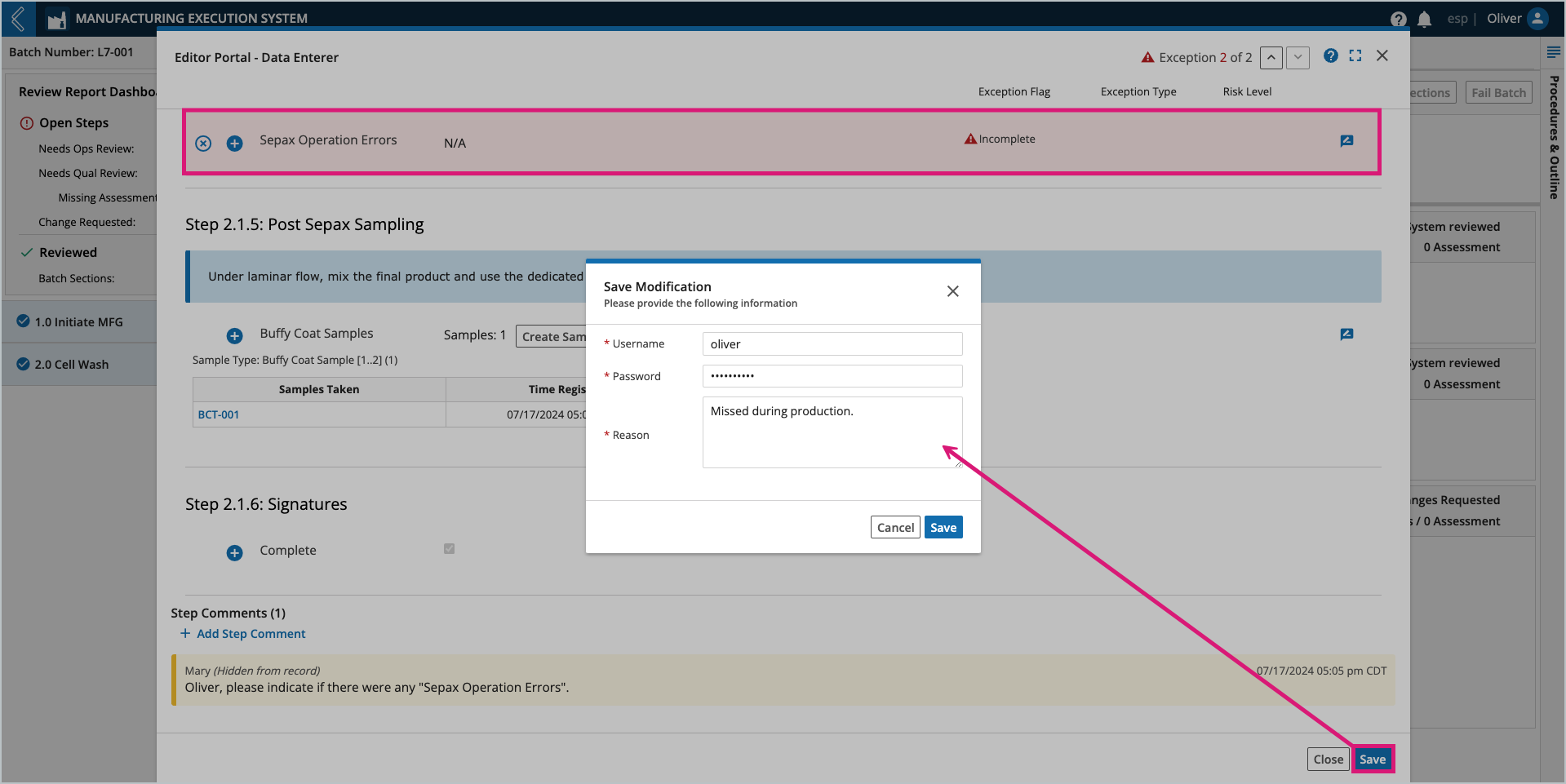
Quality reviewers can triage exceptions by assigning an exception type and risk level to any field in the EBR, then push this data to their QMS. Exception types and risk levels are managed in L7 Configuration, and the QMS integration is configured by a developer. This Pipeline is then assigned to the Recipe in L7|Master.
To update exception types and risk levels:
Go to L7 Configuration.
Select the esp Configuration.
Switch to "code view".
Edit the exception types and risk levels displayed under mes (top of the file).
Save the Configuration.
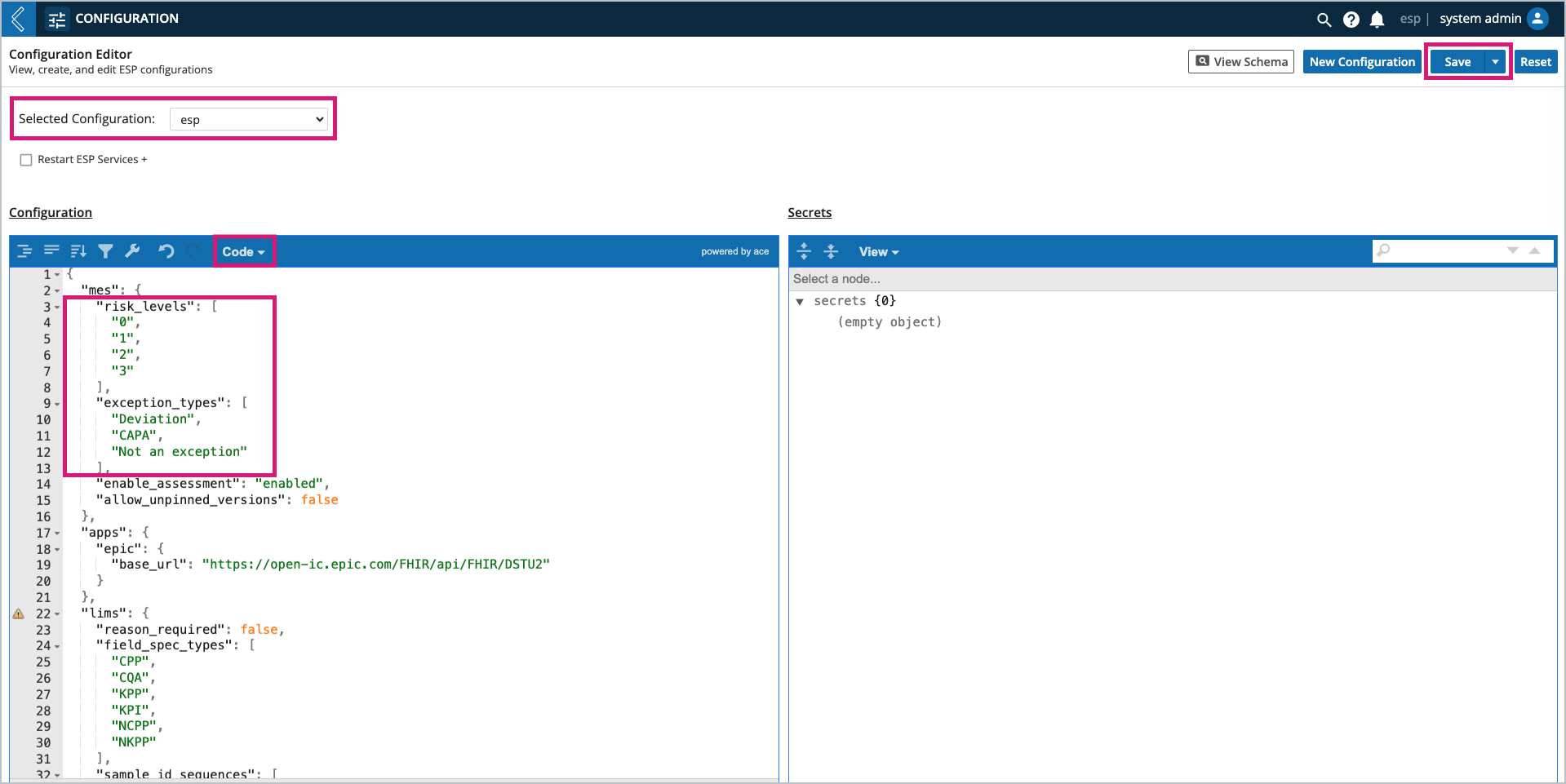
Note
Exception assessments are enabled by default, but can be disabled on line 14 in the screenshot above.
Users still need the appropriate permissions to make assessments with this feature enabled.
To enter an exception assessment:
Select the name of a Step or Sub-Step in the Quality Review tab.
In the Reviewer Portal, select the "assessment" icon next to the field of interest.
Assign an exception type and risk level.
Add a comment for the assessment.
Select Save.
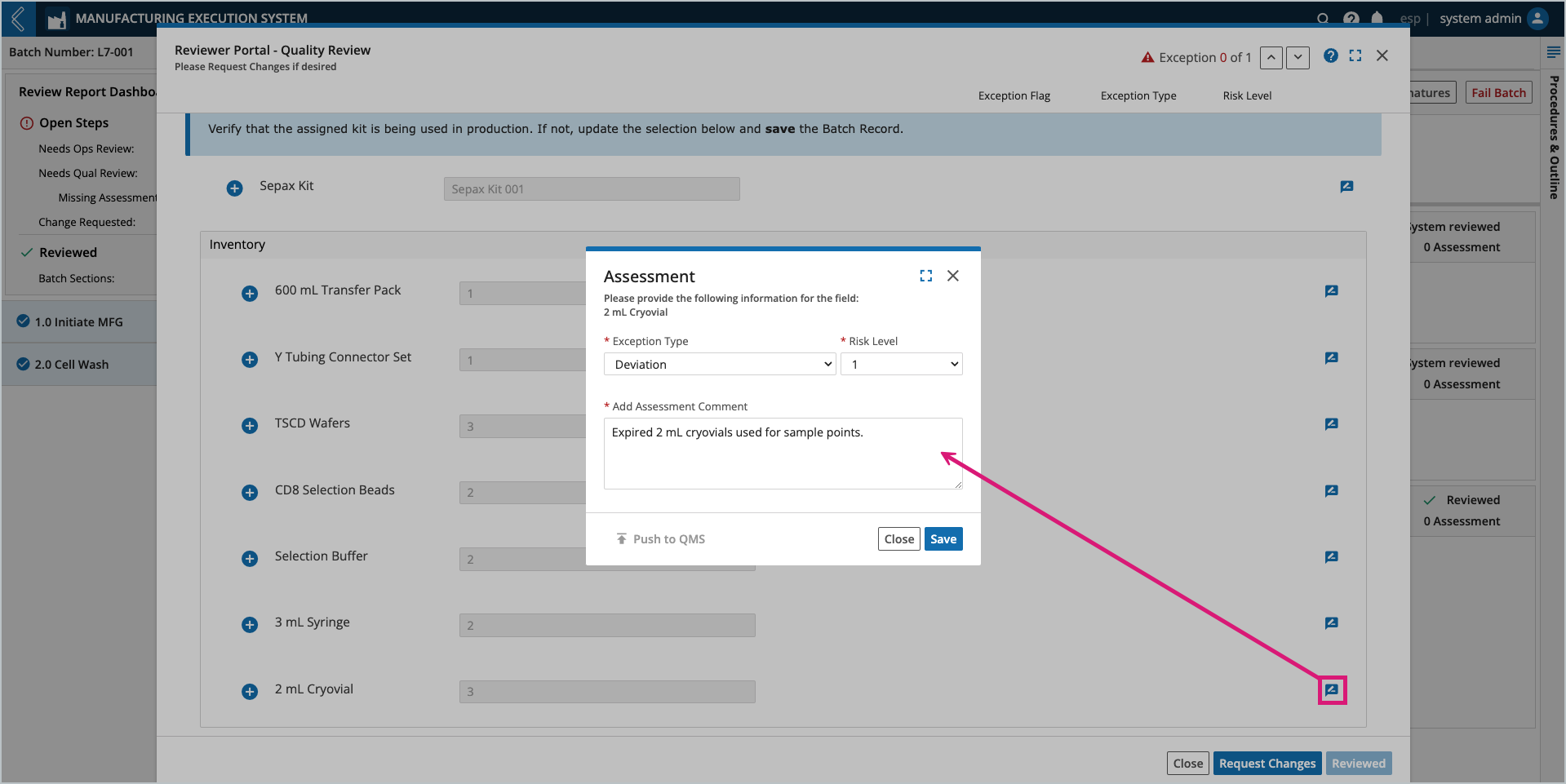
Note
Only (1) assessment can be assigned to vector fields. This assessment should account for all exceptions in the table.
Fields with an assessment are assigned the "Manually Assessed" exception flag.
To push this assessment to your QMS, select Push to QMS at the bottom of the modal.
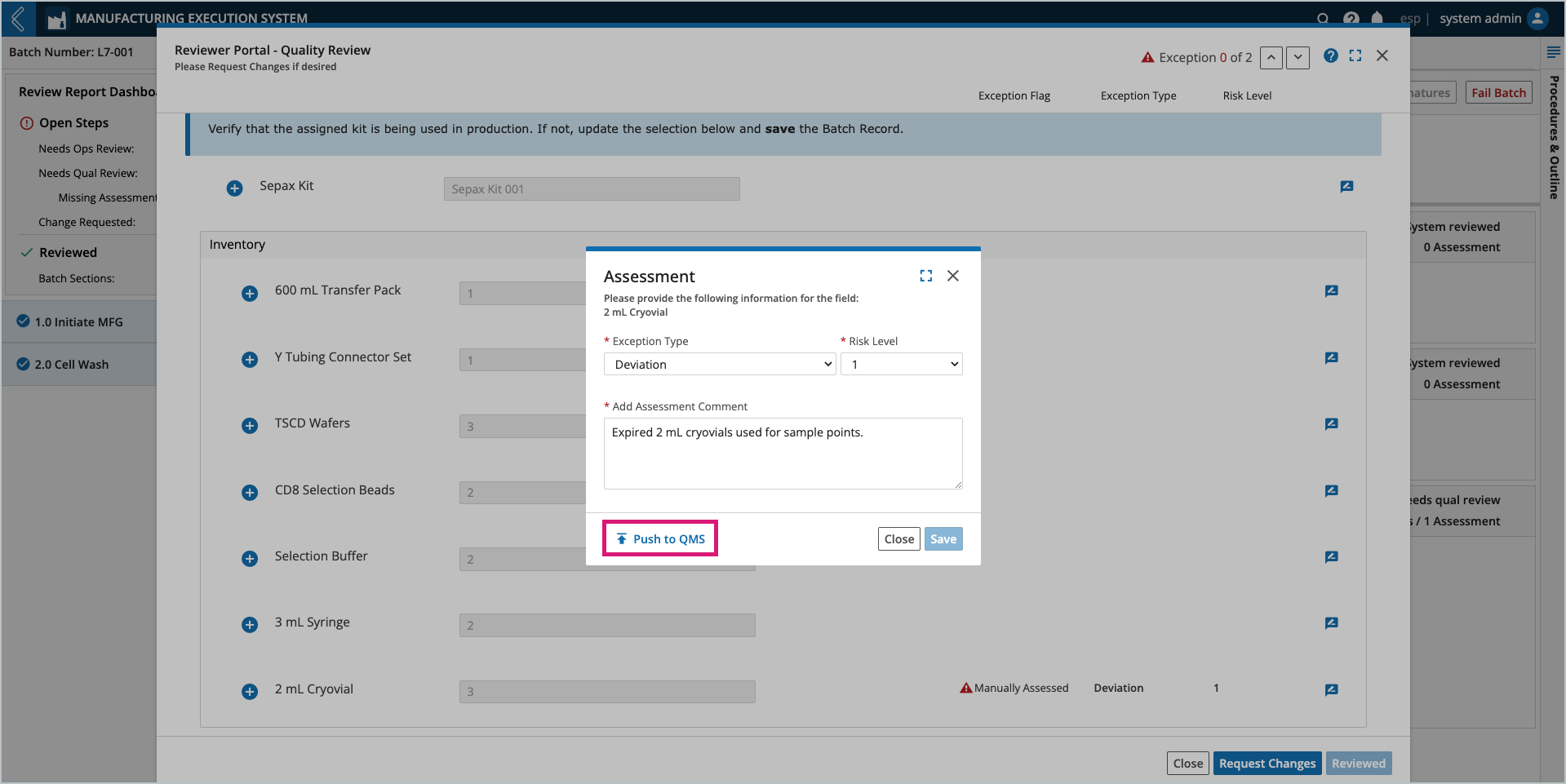
After confirming and completing the push, a "pushed" icon will appear next to the assessment icon in the Reviewer Portal.
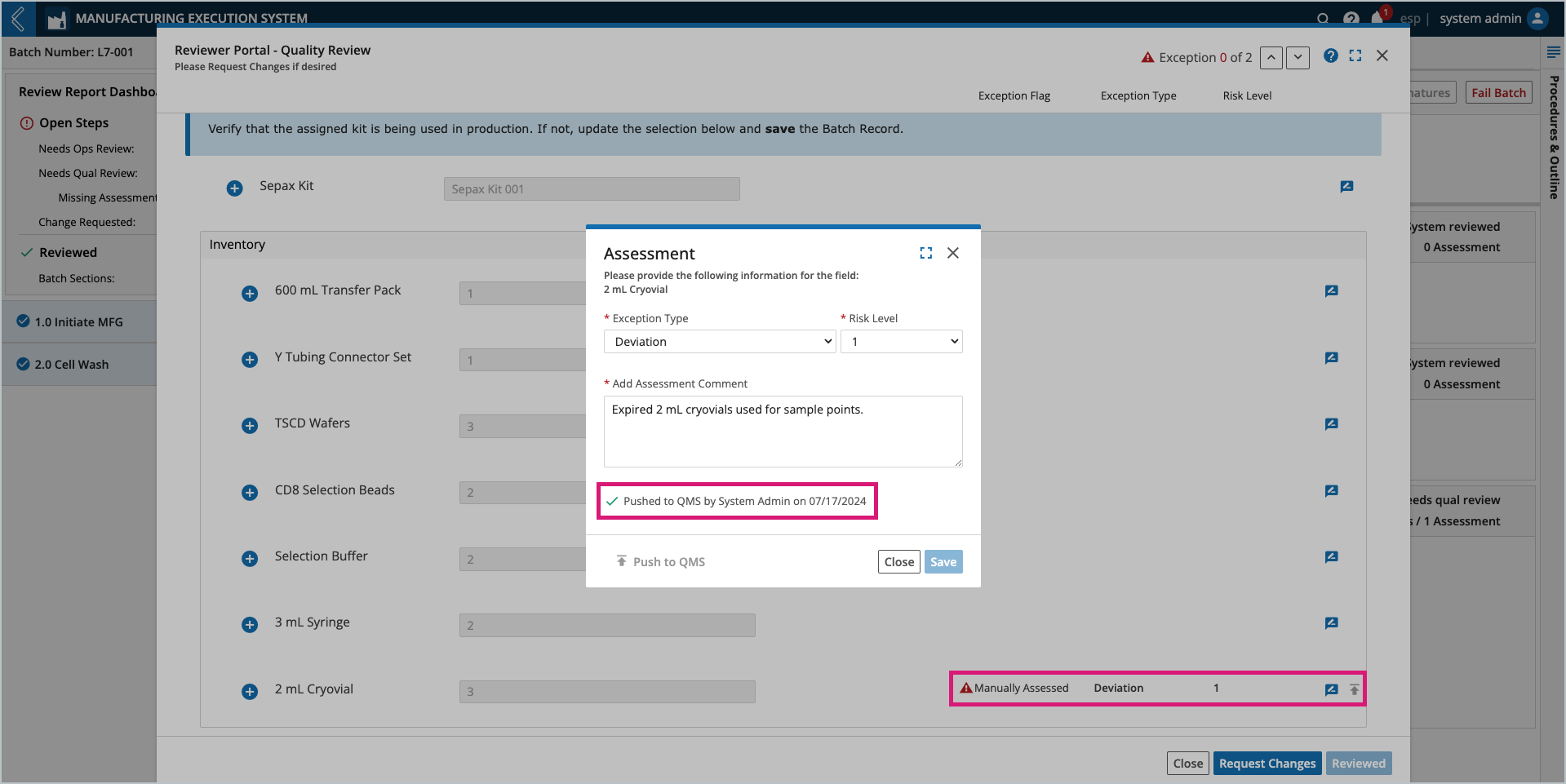
Note
Assessments can only be pushed once per field, unless the initial push failed.
Quality Review requires one (1) signature from an operations reviewer and a second signature from a quality reviewer.
To enter a Review Signature:
Select the Review Signatures button at the top of the screen.
Note
This button will be enabled once all Steps in the Batch are in the Reviewed or System Reviewed state.
Select the Operations Signer or Quality Signer tab (the same person cannot sign for both).
Enter your L7|ESP username and password (must be the logged-in user).
Select Sign.
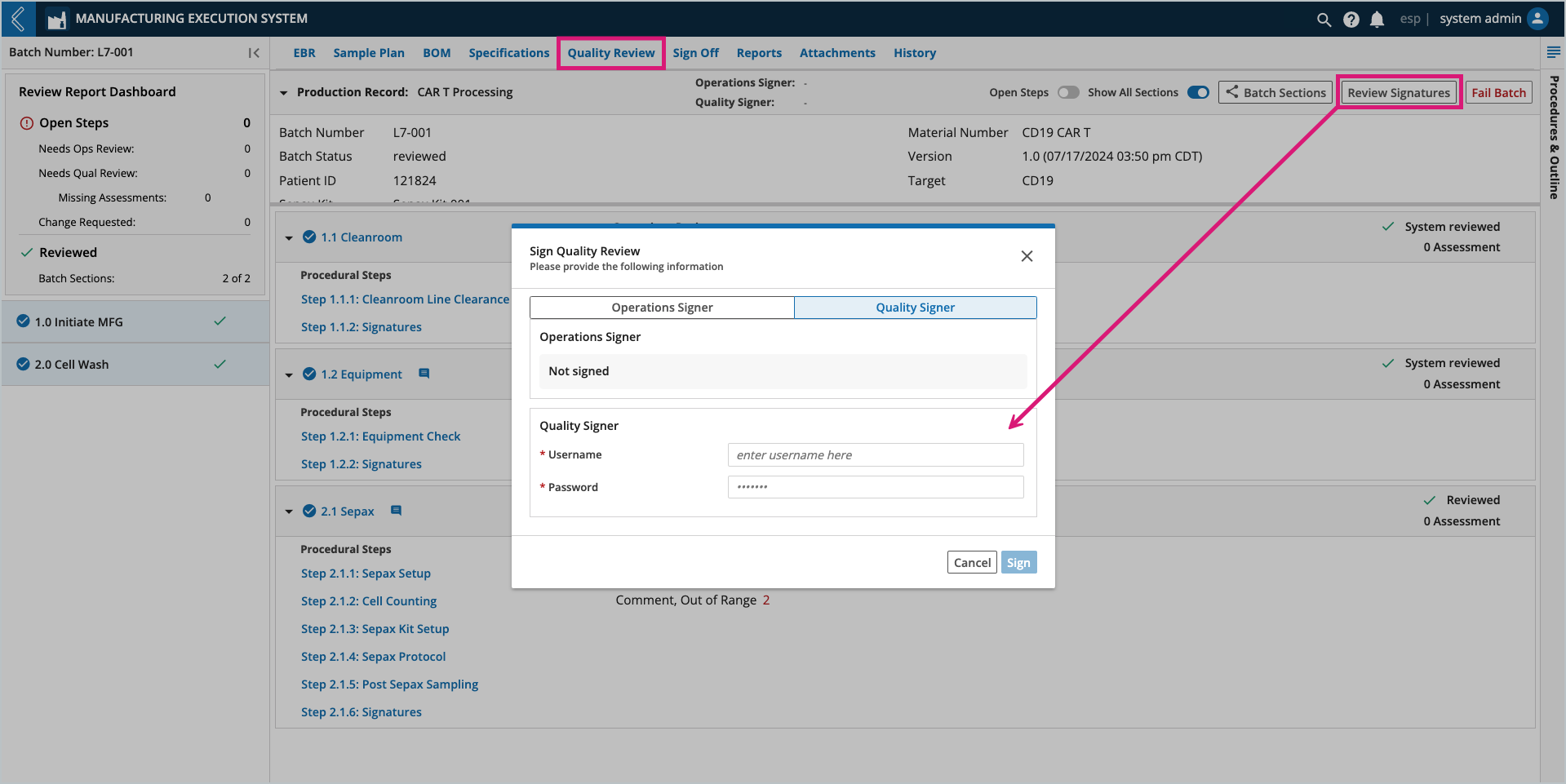
Before the Batch is completed, users with the appropriate permissions can fail the Batch. Failed Batches are locked, but users may run reports and review the data recorded prior to the failure.
To fail a Batch:
Select the Fail Batch button at the top of the screen.
Enter a failure reason (including deviation numbers or SOP references).
Enter your L7|ESP username and password (must be the logged-in user).
Select Fail Batch.
